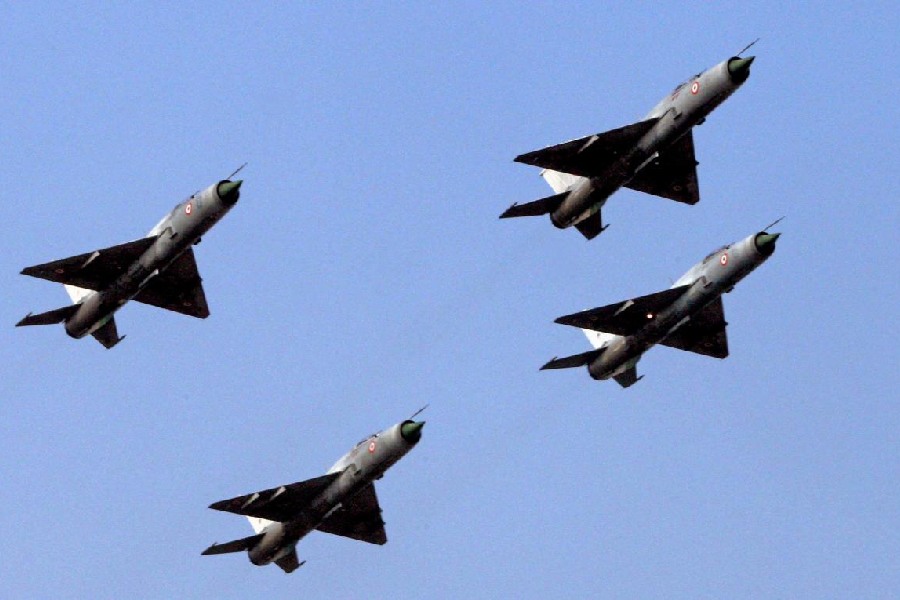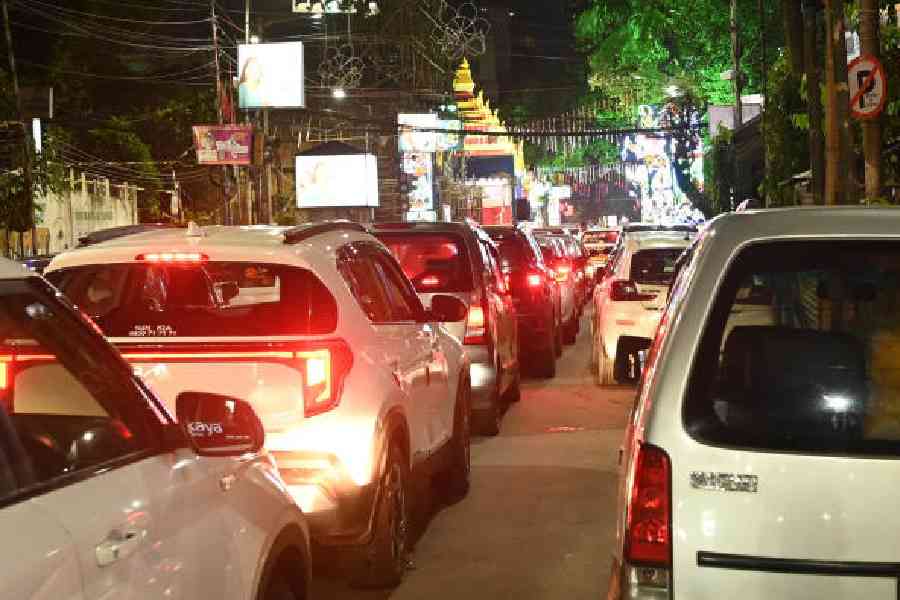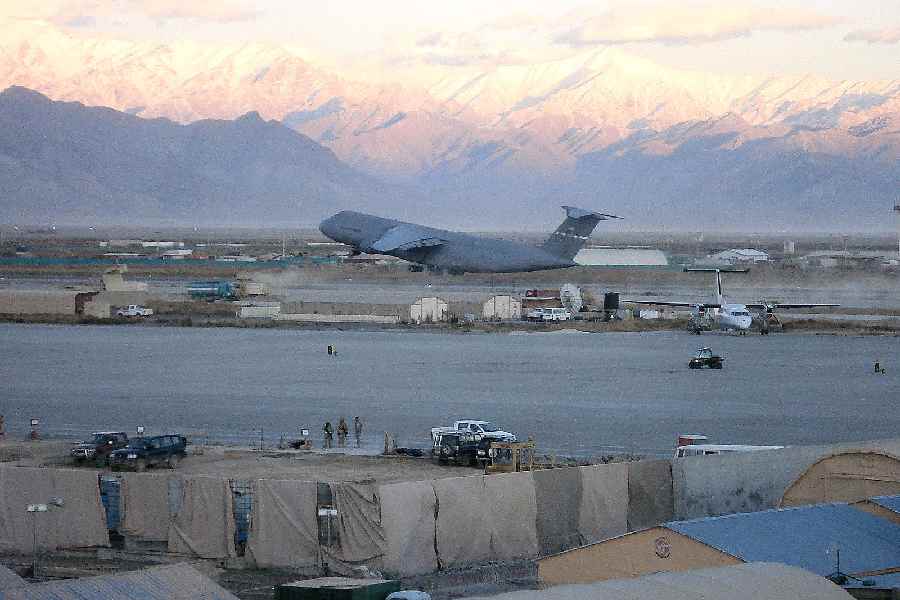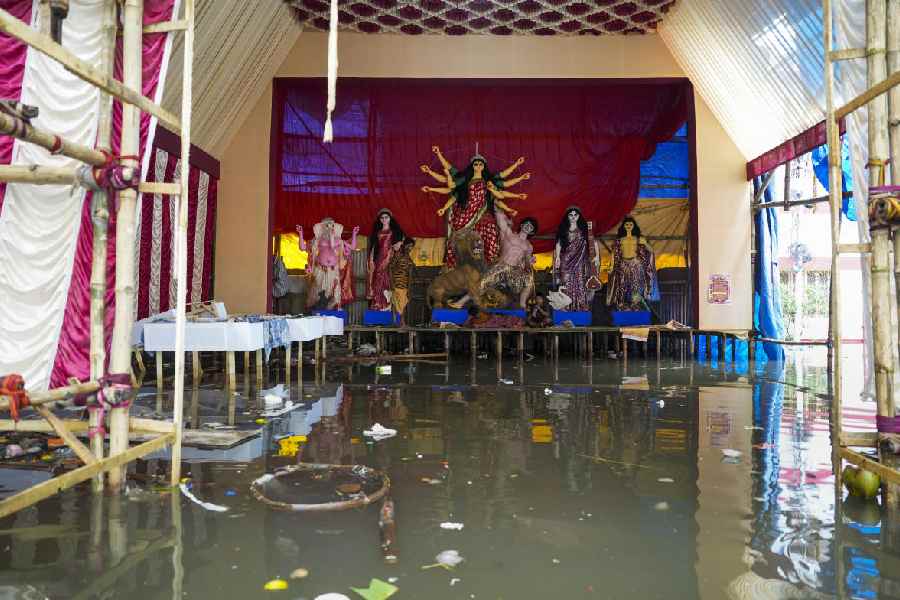 |
From a distance, Bhupendra Nath Goswami has been watching the rain that battered homes in Calcutta last week and the cloud bursts that killed dozens of people in Himachal Pradesh recently. The trend that the climate scientist has pencilled on a graph is unmistakable. There has been a steady increase in short but very intense rainfall.
The average number of extreme events — the ones that trigger flash floods and landslides or flood city streets and ravage crops — mounted from eight a year in the 1950s to 18 per year in the early 21st century. The cloud burst that triggered a landslide of mud and boulders near Rampur in Himachal Pradesh and the heavy rains of Calcutta are examples of the events that Goswami is tracking from his office in Pune.
“Predicting extreme events is difficult — we can’t say where they’re going to happen. The entire country will need to prepare for events with disaster potential,” says Goswami, the director of the Indian Institute of Tropical Meteorology (IITM), Pune.
Sitting before his computer on the other side of the world, atmospheric scientist Gerald Meehl at the National Centre for Atmospheric Research in Boulder, Colorado, US, has caught a slightly different glimpse of the monsoon altering its behaviour. Using computers and weather physics to simulate rainfall in response to soot particles spewed into the sky, Meehl has predicted a drier monsoon and more rain in the pre-monsoon summer months of March, April and May in India.
 |
Humans now appear to be changing the Indian monsoon — for the first time in the eight-million year history of this weather phenomenon. The signals are tumbling out from weather observations as well as from computer simulations. They appear to foreshadow a schizophrenic monsoon — one that unleashes its fury at some places and causes other places to remain dry: more extreme events, a simultaneous weakening of the monsoon, poor rains in Chhattisgarh, Madhya Pradesh and Kerala, but a wetter West Bengal and the west coast.
“The exact implications of such findings on agriculture aren’t clear yet,” says Laxman Singh Rathore, a senior scientist at the National Centre for Medium Range Weather Forecasting, Noida, on New Delhi’s outskirts.
The monsoon is a child of geography and shifting continents, born — scientists believe — when the Himalayas and the Tibetan plateau arose to provide a barrier north of India. During summer, hot air over the land moves upwards and allows moisture-laden air from the oceans to flow over the land, resulting in cloud build-up and the monsoon.
Atmospheric physicist Porathur Joseph and his student Anu Simon at the Cochin University for Science and Technology were among the first to sound an alarm two years ago. They analysed rainfall patterns over the past 50 years and found that the number of days of heavy rain during the monsoon season had plummeted by nearly 80 per cent and the days of moderate rain dropped by 45 per cent.
The India Meteorological Department (IMD) — the nation’s official weather service — has also picked up indicators of change. Senior IMD scientist Madhavan Rajeevan and his colleagues combed through rainfall data gathered by over 1,400 meteorological stations across the country over the past century and found some stark patterns — some drier zones and some wetter.
Monsoon rainfall over Chhattisgarh, Kerala, and Madhya Pradesh is now about 10 cm lower than what it was in the early 1900s. But West Bengal now receives 10 cm more rainfall, while the west coast records 30 cm more than the earlier readings.
At Pune’s IITM, K. Krishna Kumar has also picked up signs of a shift in the monsoon season. In one of the most exhaustive analyses of rainfall, Kumar tracked past rain records from across India between 1891 and 2004. In a paper presented at a conference at IIT-Kanpur last year, he showed that rains now arrive in the Indo-Gangetic plains about 15 to 20 days earlier than they did in 1981.
The findings are getting the IMD to concede that the monsoon is not what it once was. For years, the IMD dismissed efforts by some researchers to link the monsoon to climate change. When studies in the mid-1990s suggested that soot and dust may combine with carbon dioxide to cause a slight reduction in the rainfall, the IMD maintained that the monsoon was immune to climate change. All variations in the year-to-year rainfall, they claimed, could be explained by “natural variability” — the inherent fluctuations built into all weather systems.
But after being in denial mode for decades, IMD insiders now concede that climate change has penetrated the lexicon of India’s weather watchers. “We share some of the concerns expressed in these studies, but we don’t agree with their conclusions completely,” says a senior IMD scientist.
But many scientists believe it is still too early to predict with certainty how exactly humans are tweaking the monsoon. “No one is close to understanding the exact processes that influence the monsoon,” says Jayaraman Srinivasan, a senior scientist at the Centre for Atomspheric and Ocean Sciences at the Indian Institute of Science, Bangalore.
But the concept of a changing monsoon doesn’t surprise scientists. “The monsoon has intensified and weakened many times over thousands of years. Each glacial period (ice age) was associated with a weak monsoon,” says Govind Ballabh Pant, another IITM scientist.
“But natural processes will dominate human-driven processes in the long term,” says Pant. “The next ice age will dawn despite global warming.” That may still be far into the future. And it won’t happen before generations of Indians face a new monsoon that continues to hold out hope and misery — but both more unpredictable than ever before.










